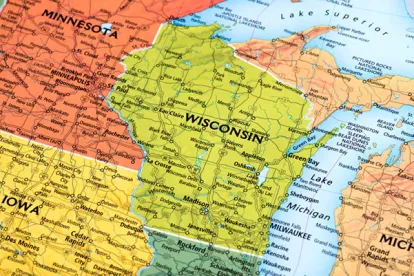n April 16, 2020, Wisconsin Department of Health Services Secretary Andrea Palm issued an updated Safer at Home Order (Emergency Order #28), which extends and makes certain adjustments to the agency’s original order that took effect on March 25, 2020. The updated order is effective April 24, 2020, and will remain in effect until 8:00 a.m. on May 26, 2020. The state also issued a list of frequently asked questions (FAQs) related to the order.
Key Highlights
While the majority of the updated order retains many safety measures instituted in the initial Safer at Home Order, there are changes that will affect individuals and businesses across the state.
Non-essential businesses must designate which employees are necessary to conduct “Minimum Basic Operations” and inform employees of their designations. The definition of “Minimum Basic Operations” has been expanded from the previous order to include the following, “provided that employees comply with Social Distancing Requirements, to the extent possible, while carrying out such operations.”
-
Delivery and mailings. Fulfilling non-essential deliveries, mailing parcels, or receiving parcels “if all of the operations are performed by one person in a room or confined space, including a car or truck. Delivery or parcel services may not require a signature by the recipient.”
-
Curb-side pick-up. Curb-side pick-up of goods “if all of the operations are performed by one person in a room or confined space at a time, including a car or truck. Goods must be purchased online or by phone before pick-up. The goods must be pre-packaged by the manufacturer, distributor, or store. The store may not require a signature by the customer. The store must schedule pick-ups to ensure compliance with Social Distancing Requirements.”
-
Arts and craft stores. Curb-side pick-up at arts and craft stores “solely for filling orders for materials for making personal protective equipment (i.e. homemade facemasks)” using no more than the minimum number of staff necessary.
-
Aesthetic or optional exterior work. Aesthetic or optional exterior residential construction and lawn care “if all the operations are performed by one person in a room or confined space, including a car or truck. No more than one employee or worker may be on the site at a time. Services may not require a signature by the recipient.”
The updated order also provides that “[s]uppliers to non-essential businesses and supply chains for non-essential businesses are non-essential and shall only operate under Minimum Basic Operations to provide goods or services to other non-essential businesses operating under this section.”
“Essential Businesses and Operations”
All businesses, whether essential or non-essential, that remain open must, “to the greatest extent feasible, use technology to avoid meeting in person, including virtual meetings, teleconference, and remote work (i.e. work from home).”
Essential businesses and operations that operate on-site need to:
-
“[r]estrict the number of workers present on premises to no more than is strictly necessary to perform the essential operation”;
-
[i]ncrease standards of facility cleaning and disinfection to limit worker and patron exposure to COVID-19, as well as adopting protocols to clean and disinfect in the event of a positive COVID-19 case in the workplace”; and
-
[a]dopt policies to prevent workers from entering the premises if they display respiratory symptoms or have had contact with a person with a confirmed diagnosis of COVID-19.”
There are also new requirements for essential businesses or operations that remain open for in-person sales, including retail stores. Under the updated order, these businesses must: consider establishing a curb-side pick-up option; limit the number of people allowed in the store depending on the square footage (and providing markings for people to line up at least six feet apart while waiting to enter); “offer at least two hours per week of dedicated shopping time for vulnerable populations”; and consider implementing other alternatives to lines (such as notifying customers by text message when they can enter the store or pick up an item).
Other Closures Under the Safer at Home Order
Certain other closures have been adjusted under Emergency Order #28. For example, schools will remain closed for the remainder of the 2019-2020 school year. The order states that “[s]chools may continue to facilitate distance learning or virtual learning” and “be used for Essential Government Functions and food distribution.” Libraries must remain closed to patrons but may now offer curb-side pick-up, provided materials are requested online or by phone and they maintain social distancing. Golf courses may re-open, but golf carts are prohibited, club houses must remain closed, and they must maintain social distancing.






 />i
/>i
